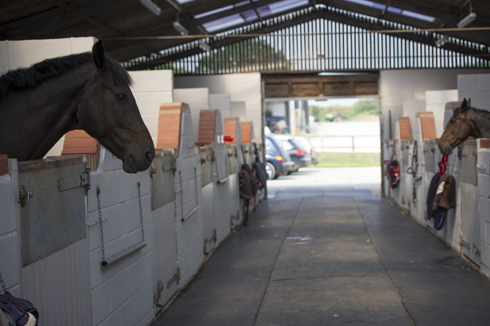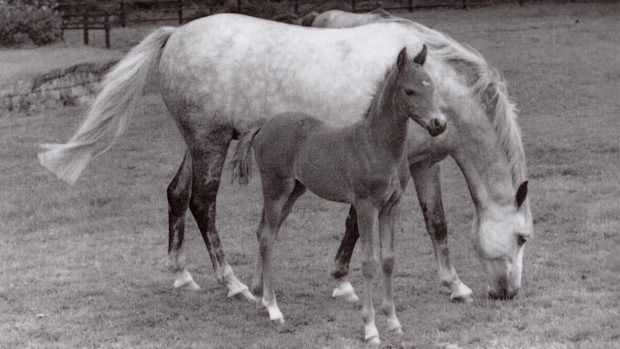With the price of everything from power and fuel to haylage wrap on the rise, it’s likely that the costs associated with your equestrian life are also going up.
If you’re facing an increase in costs, don’t panic – there are ways to save money without compromising on your horse’s care or welfare. Implementing these suggestions will go some way to help ensure your monthly horse bills do not exceed your mortgage…
1. Organise communal visits and ask for discounts
Some veterinary practices offer free yard visits to a particular area on specific days for routine tasks such as vaccinations, teeth checks and assessments. Even if you can’t benefit from a free call-out, teaming up with other owners for routine appointments like the vet, farrier, physio and equine dental technician can typically save you a sizeable amount of cash.
2. Bring and buy
If you have tack and equipment you no longer need, there are a number of ways of finding it a new home and earning a bit of extra cash. You can sell your unwanted horse kit online on sites like eBay or Preloved or Horse & Hound, via social media, through ads in your local tack shop, by attending a horsey car boot/table top sale or by listing things on a board at your livery yard. Whichever route you choose, we recommend you either do transactions face-to-face for cash or using a protected payment system like Paypal for extra protection.
3. Team up to bring in, turn out or muck out
While many DIY livery yards offer assistance in the form of a person you can pay to help with regular tasks such as turning out, mucking out or poo-picking, if the yard allows and you can sort out a rota between your fellow liveries, you may be able to avoid this additional expense.
4. Share equipment
There is little point in investing in items that you might use only occasionally, so whether it’s a set of lungeing equipment or a massage pad for your horse, have a chat with your friends to see if you can club together and have shared use of the equipment. Make sure you agree who is responsible for the cost of repairs and maintenance beforehand to avoid problems later on.
5. Buy in bulk
Shopping around for hay and bedding, and buying directly from a local farmer rather than through an equestrian retailer, can be a good penny saver. In particular, buying hay directly off the field after it has been baled (you will have to be able to collect it) can result in major savings. Wormers are another item where you can save by buying in bulk, although it’s vital that you worm count first – which could save you even more money if the test shows your horse doesn’t need de-worming after all.
6. Buddy up for lessons
Whether you travel to your trainer’s yard for lessons or have your trainer come to you, by having a shared or group lesson you can keep the cost down, which may allow you to train more frequently. Having a riding ‘buddy’ also means you can be ‘eyes-on-the-ground’ for each other, helping you both to progress in between training sessions.
7. Share transport costs
Transport can be a major cost for competitive horse owners. Some yards will help to co-ordinate liveries so they can share transport to a venue for training or competitions. Or if you have a friend who is competing at a similar level, you might consider sharing the running costs of a lorry between you. Another alternative is to choose a livery yard which holds regular competitions. Although the livery rate is likely to be higher, you will save yourself time, running costs and fuel, which all adds up.
8. Buy essentials off-peak
If you have room to store it, stock up on hay and bedding in the summer. Not only will you be prepared, but you’re very likely to save money. Just make sure you check the quality of the forage, especially if you are buying hay from the previous year’s crop. Keep an eye out for sales, both online and in your local tack shop, as buying winter rugs during the summer and fly rugs in the autumn will also give you the chance to save – but only buy what you are confident you are going to need, rather than simply expanding you horse’s wardrobe because an item appears to be an unmissable bargain.
9. Know exactly what you’re paying for
Some yards offer flexible livery packages and it is worth seeking these out if you feel a more adjustable arrangement would suit you – for example, would your yard allow your horse to live out full time during the summer at a cheaper rate, then be stabled during the winter? Also consider whether you need all the facilities offered by your yard (horsewalker, arena, etc), or would a yard with fewer facilities be sufficient? Either way, keep an eye out for added extras. Understandably, most yards charge extra for using the horsewalker, solarium or lights in the arena, for example, to cover the costs of the electricity. As these charges can add up, make sure you keep track of what you’re spending so you don’t get an unpleasant surprise when your livery bill arrives.
More money-saving advice you may be interested in:

How ‘eyes on the ground’ can help with your training and save you money

How to reduce your hay bill this winter

How to clean your horse’s rugs at home
With mud and wet weather a constant problem during the winter, Horse & Hound offers some useful tips on the

Riding tights with more than 50% off, plus more hand-picked discounts for equestrians

Subscribe to Horse & Hound this spring for great savings
Horse & Hound magazine, out every Thursday, is packed with all the latest news and reports, as well as interviews, specials, nostalgia, vet and training advice. Find how you can enjoy the magazine delivered to your door every week, plus options to upgrade your subscription to access our online service that brings you breaking news and reports as well as other benefits.




